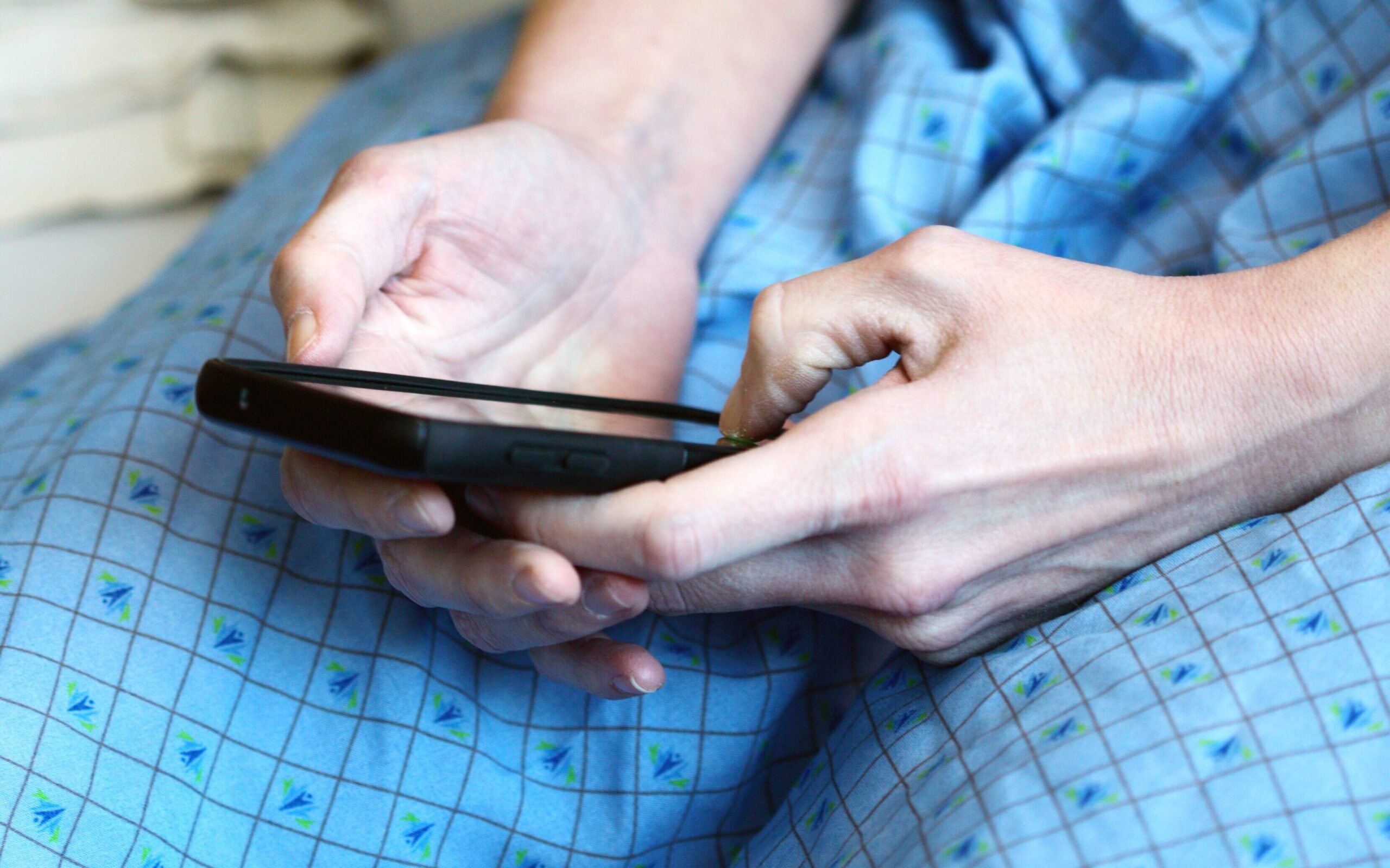New from the @EmoryCSHH News Team:
Alexa Morales recommends Cassandra Quave's memoir "The Plant Hunter: A Scientist's Quest for Nature's Next Medicines" for its vivid imagery and musings on the medicinal properties of plants.
Measuring Care Beyond the Bedside
Exploring the transformative impact of the HCAHPS survey on patient experience and healthcare quality.
By Caroline Hansen
When someone goes to the hospital they want quality care. However, safety and quality are not the only focus of healthcare providers and administrators. “Patient Experience” has taken off over the past decades. Part of the spark of the patient experience movement was the Hospital Consumer Assessment of Healthcare Providers and Systems (HCAHPS) survey. This was the first standardized survey of patient experience in the United States and changed how healthcare providers deliver their quality care.
HCAHPS was created by the Center for Medicare and Medicaid (CMS) and the Agency for Healthcare Research and Quality (AHRQ) in 2006. It is the first publicly reported survey about patients’ experience with their hospital care. The Center for Medicare and Medicaid created the survey to produce data about the patient’s perspective of their care. Since the scores are publicly reported, hospitals’ scores can be compared. Reporting scores increase transparency and accountability, incentivizing hospitals to enhance the quality of care they provide. HCAHPS is twenty-nine questions that ask about the patient’s experience with their recent hospital stay. The HCAHPS website states, “The HCAHPS Survey asks recently discharged patients about aspects of their hospital experience that they are uniquely suited to address. The core of the survey contains 19 items that ask “how often” or whether patients experienced a critical aspect of hospital care, rather than whether they were “satisfied” with their care.”
While HCAHPS seems niche and complex, it contributes to 25 percent of a score that in 2020 redistributed $1.9 billion to hospitals and health systems. The survey is correlated to improved health outcomes and quality; however, it also has its downfalls. The methodology of survey distribution, the questions themselves, and the limited languages provided discount the accuracy of measuring a patient’s experience with their care. So, while the purpose of the survey is to tie the performance of the hospital’s patient experience of their care to financial gain, the reliability of the scores is skewed due to outdated questions and methods.

Bridging patient feedback with hospital performance
Every year, over 4,000 hospitals participate in HCAHPS and over 3 million patients fill out the survey. HCAHPS is a data measurement of patient experience. Patient experience looks at relationship-centered care, seeing how and to what extent patients develop a relationship with their provider. Patient experience matters not only because there is a tie to reimbursement, but also for each hospital’s business model. Hospitals are not only focusing on patient experience to improve HCAHPS scores. Improving the patient experience also increases a patient’s loyalty to a specific hospital and healthcare system. This helps keep healthcare systems financially afloat. David Betts at Deloitte writes that “improving patient experience can help a hospital improve its financial performance by strengthening customer loyalty, building a reputation and brand, and boosting utilization of hospital services through increased referrals to family and friends.”
Patient experience is an important aspect of healthcare to measure, not just because of its time to reimbursement from the Center for Medicare and Medicaid. Hospitals utilize patient experience to grow and retain their patient base. Patrick Oben is a hospitalist and physician leader of patient experience at MercyOne Des Moines Medical Center. His work in patient experience leads him to say: “The accuracy of patient feedback is crucial for making meaningful improvements in healthcare delivery. We really need those responses to be accurate.” With the emergence of the importance of patient experience in a hospital’s business model, the Center for Medicare and Medicaid created the HCAHPS survey for standardization.
To incentivize patient experience in 2012 CMS linked scores to part of Medicare’s payment system, called value-based purchasing (VBP). While a good incentive, some critique the survey’s response rates and accessibility. Low response rates can skew scores and cause reimbursement from Medicare that is not reflective of the hospital’s patient experience.
The Center for Medicare and Medicaid connected the survey to the value-based purchasing program as a financial incentive. Now HCAHPS plays a role in hospital payment. The program is part of the payment system with the largest percentage of Medicare spending. VBP impacts payments for inpatient stats in approximately 3,000 hospitals in the United States. “The payment from CMS to hospitals will be based upon the quality of their care, not just volume. That was the impetus for value-based purchasing.”
CMS funds the VBP program by withholding two percent of hospitals’ Medicare payments, then redistributing based on a Total Performance Score. The total performance score is a combination of measures of health outcomes, patient safety, patient experience, efficiency, and cost reduction. The HCAHPS score is the patient experience measure.
These scores can be measured in the HCAHPS survey with questions such as, “Before giving you any new medicine, how often did hospital staff describe possible side effects in a way you could understand?”. Patient satisfaction surveys aim to observe a patient’s attitudes and perception of the care they receive. To measure patient experience HCAHPS asks questions including, “Would you recommend this hospital to your friends and family?”. However, there are doubts that these are the correct questions to be asked. Josh Ettinger, the Vice President of Consumer Experience in Kaiser Permanente’s Northern California region, says, “We’re seeing that in HCAHPS the questions themselves are not great in really understanding people’s experiences in totality,” (Disclosure: the author has worked for Ettinger at Kaiser Permanente for multiple summers). While the purpose of the survey is to measure experience, broad questions will provide the tools hospitals want to provide personalized and patient-centric care.

“If you only measure HCAHPS,” Ettinger continues, “you will likely not get the full story on how your patients, consumers, and in our case members are really experiencing your services, really understanding their needs and wants so that you can deliver on them.”
The challenge of making data useful
Healthcare systems want measurable data so they can implement interventions to improve the experience at their facilities. However, if the measured questions are not useful for healthcare workers and administrators, HCAHPS is a statistic that matters for reimbursement but not much else.
Nonetheless, studies show integrating HCAHPS scores with payment-based incentives contributes to the improvement of healthcare quality measures. The Journal of General Internal Medicine published a study stating that HCAHPS scores are inversely correlated with 30-day readmission rates for acute myocardial infarction, heart failure, and pneumonia. Hospitals with higher scores saw a 1.6 to 4.9 times better clinical performance. The study indicates an association between increased HCAHPS scores and improved patient outcomes. Willaim Lehrman, Social Science Research Analyst at the US Department of Health and Human Service and the government task leader has done work surrounding clinical outcomes and HCAHPS scores. Lehrman says, “All our evidence, all of our research showed that hospitals that do well on HCAHPS also do well on clinical outcome, safety, even financial measures. And we have no reason to think that that has changed for HCAHPS.” Although HCAHPS might not be relevant in-hospital interventions, the incentive for increasing HCAHPS scores can also be improving clinical outcomes.
Improved scores decreasing the readmission rate is not a surprising claim. The survey includes questions surrounding hospital discharge such as “During this hospital stay, did you get information in writing about what symptoms or health problems to look out for after you left the hospital?”. When these measures improve, readmission rates should decrease. However, while 30-day readmission rates are a beneficial outcome, it does not fulfill the purpose of the survey. The purpose of HCAHPS is not to improve clinical outcomes but to measure to improve patient experience.
While there are benefits to the HCAHPS such as the promotion of patient experience and the correlation to clinical outcomes, there are worries about the methodologies for the survey. The methodologies of the survey have come into question due to the response rate, mode of survey delivery, and the languages provided. The HCAHPS survey has a very low response rate, which can skew results. AHA’s White Paper report highlights that response rates have fallen from 33 percent in 2008 to 26 percent in 2017. Non-response can lead to lower scores that do not reflect the patient’s perspective since scores are skewed downwards. However, research on HCAHPS does indicate that adjustments made in the scoring based on survey mode and patient mix can calm these concerns.
Research highlights that while response rates have decreased over time, HCAHPS’s overall score increased. While this statement is true, scores could have increased more due to the correlation between response rate and HCAHPS score. So, while scores have been increasing, the increasing number of non-responses has impacted the accuracy of the scores.
Non-response bias is dangerous for multiple reasons. Since HCAHPS is tied to the value-based purchasing program, having a skewed response can lead to reimbursements that are not reflective of the performance of the hospital. In addition, since hospitals view consumer experience as a way to improve patient loyalty and maintain a consumer base, using the data that HCAHPS provides will be beneficial. However, if this measure is not a true reflection then it will not be useful for intervention creation to improve the consumer experience.
Collection methods affect data results
The mode of survey delivery is believed to affect response rates. Currently, the HCAHPS survey is provided via paper mail or automated telephone calls. In the current digital age, CMS is behind by having no digital option for the HCAHPS survey. The lack of a digital option for the survey also raises the concern of the specific population that is responding. Survey mode is stated to shift which population will respond. 54 and younger are more likely to respond when the survey mode is via phone call, while those older than 54 prefer mail surveys. Millennials and Generation Z are more inclined to fill out the HCAHPS survey if there is a digital option. Expanding the modes of the survey will create representative scores of patients’ perspectives. To highlight the outdated methodology of the survey Ettinger says “As the industry matures, so does its understanding of consumer experience. HCAHPS will likely have a shorter shelf life, meaning it doesn’t really measure experience.”
The timing of the survey can also impact the accuracy of HCAHPS results. The survey is sent to patients 48 hours to 6 weeks after the patient’s discharge. The time lag between inpatient discharge and survey receipt could introduce patient recall bias into the survey responses. Lehrman discusses the impact of when people submit the survey. “We found in our research experimentation that again, people who responded late often have tended to have more negative impression of hospital care,” Lehrman states. A patient’s perception of their care can evolve, and by the time they receive the survey, they may have forgotten the specifics of their care.
In addition, the timeline of the survey also impacts how healthcare providers can utilize the data. “The early days of HCAHPS it often took a long time for the patient survey to get there,” Lehrman says. “But more and more hospitals want to get data information feedback quickly so they’re turning discharged list over to the survey vendor like overnight or within a week.” The lag in the survey does not only impact the responses but also how healthcare providers can see if their patient experience interventions are beneficial.

An additional barrier to an HCAHPS score that is representative of the population is language. Currently, HCAHPS is only available in eight languages other than English While HCAHPS does provide language options for the most commonly spoken languages, there are still gaps in language availability and literacy. The Center for Medicare and Medicaid provides the other language options, but hospitals are not required to use them. Individuals with limited English proficiency tend to express higher levels of dissatisfaction with healthcare. Conversely, research reveals that patients who do speak languages other than English in their households rate hospitals higher than those who prefer English. While their experience levels are lower, the initiatives implemented in hospitals to improve patient experience are not representative of their needs.
Preparing for HCAHPS 2.0
To update the HCAHPS survey that currently has accuracy flaws, in January 2025, “HCAHPS 2.0” will be released. The updated version will include changes in survey administration and survey content. Lehrman says “We’re hopeful that we’ll get more representativeness in the survey and hopefully better response rates too.” According to the Center for Medicare and Medicaid, with HCAHPS 2.0 there will be an online survey option. This can improve HCAHPS accuracy by gaining the perspective of a younger demographic and increasing the response rate. Also, loved ones can fill out the survey in place of the patient. The hospitals will be required to collect information about what language a patient speaks. Spanish-speaking patients will be provided with an official Spanish translation of the survey. In addition, the data collection period will extend from 42 to 49 days. The extension will improve patient response rates but also has the potential for recall bias. With these changes, hopefully, responses will increase to have a more accurate score.
Overall, the original publication of HCAHPS was monumental in the patient experience movement. However, the questions and methodologies of the survey need a dire update. 2025 marks a new era for HCAHPS and its utilization in the modern day.

